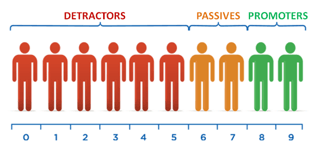Startups Stack Exchange Archive
Need some metrics to judge the customer satisfaction
- posted by: SAQIBZAFAR on 2016-02-19
- tagged:
business-plan,customer-development,customer-service - score: 2
Not sure if this is the right place to ask this question but I am looking to have a comment card printed out for my new store. I want to have a comment card where i can easily judge how my business is doing in the eyes of the customer. For now i am adding following metrics:-
- Atmosphere
- Value for money
- Quality of products
- variety of products
- friendly service
[all of these will have values - bad - normal - good - excellent]
I am not sure this covers all of bases. And want to make sure i didn’t miss anything.
Nature of business: it would be a shop for ladies, gents clothes + accessories, etc.
Answer 9179
- posted by: Uxbridge on 2016-05-13
- score: 2
You could consider adapting Google’s HEART metrics:
Happiness: measures of user attitudes, often collected via survey. For example: satisfaction, perceived ease of use, and net-promoter score.
Engagement: level of user involvement, typically measured via behavioral proxies such as frequency, intensity, or depth of interaction over some time period. Examples might include the number of visits per user per week or the number of photos uploaded per user per day.
Adoption: new users of a product or feature. For example: the number of accounts created in the last seven days or the percentage of Gmail users who use labels.
Retention: the rate at which existing users are returning. For example: how many of the active users from a given time period are still present in some later time period? You may be more interested in failure to retain, commonly known as “churn.”
Task success: this includes traditional behavioral metrics of user experience, such as efficiency (e.g. time to complete a task), effectiveness (e.g. percent of tasks completed), and error rate. This category is most applicable to areas of your product that are very task-focused, such as search or an upload flow.
See https://library.gv.com/how-to-choose-the-right-ux-metrics-for-your-product-5f46359ab5be#.mxg8w3jhs
Answer 11434
- posted by: Ryan Law on 2016-10-26
- score: 2
The Net Promoter Score (NPS) is most commonly used for quantifying customer satisfaction, and it could work as a comment card just as easily as it does in an online context.
The NPS uses a simple survey question:
"How likely are you to recommend [your company product] to a friend or a colleague?"
Respondents are then asked to choose a corresponding score, on a scale from 0 ("Not at all likely") to 10 ("Extremely likely"):

Your Net Promoter Score is then calculated by subtracting the percentage of Detractors from the percentage of Promoters. A positive score suggests more people willing to recommend your business than those trying to dissuade others from visiting you - you're receiving a net promotion - and vice versa.
For example, if you handed out 10 comment cards to your shoppers, and 50% of respondents were promoters, and 10% were detractors, your NPS would be 40:
As far as benchmarks go in retail, according to NPSBenchmarks, consumer brands manage a meagre average NPS of just 43.
All content is licensed under CC BY-SA 3.0.